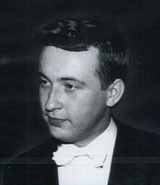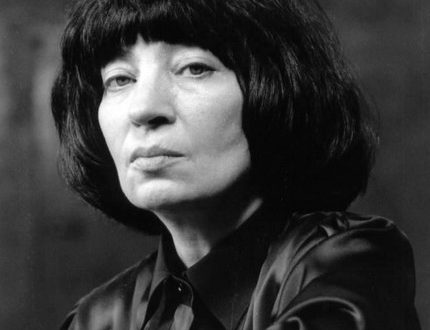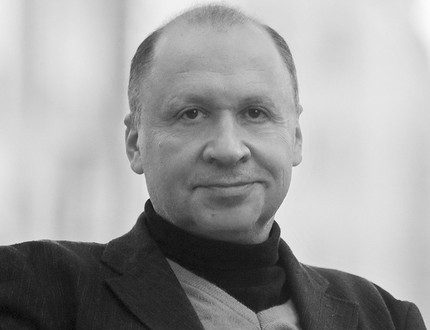
Nadezhda Iosifovna Golubovskaya |
Nadezhda Golubovskaya

In the pre-revolutionary years, pianist graduates of the St. Petersburg Conservatory competed for the right to receive the Anton Rubinstein Prize. So it was in 1914. Remembering this. S. Prokofiev wrote later: “My serious competitor was Golubovskaya from Lyapunov’s class, a smart and subtle pianist.” And even though the prize was awarded to Prokofiev, the very fact of rivalry with such a first-class pianist (as well as his assessment) speaks volumes. Glazunov also drew attention to the student’s abilities, who made the following entry in the examination journal: “A huge virtuoso and at the same time a musical talent. A performance full of variety, grace and even inspiration.” In addition to Lyapunov, A. A. Rozanova was also Golubovskaya’s teacher. She received several private lessons from A. N. Esipova.
The performing activity of the pianist after graduating from the conservatory developed in different directions. Already her first independent clavierabend in the spring of 1917 (the program included Bach, Vivaldi, Rameau, Couperin, Debussy, Ravel, Glazunov, Lyapunov, Prokofiev) earned a favorable review from V. Karatygin, who found in Golubovskaya’s playing “a lot of subtle poetry, a living feeling; great rhythmic clarity is combined with emotional passion and nervousness. Not only solo performances brought her wide fame, but also ensemble music playing, first with the singer Z. Lodius, and later with the violinist M. Rayson (with the latter she performed all ten of Beethoven’s violin sonatas). In addition, from time to time she also performed as a harpsichordist, playing works by composers of the 3th century. The music of the old masters has always attracted the close attention of Golubovskaya. E. Bronfin says about this: “Possessing a repertoire that includes piano music from different eras, national schools, trends and styles, possessing the gift of deep penetration into the poetic world of the composer, the pianist, perhaps, most clearly manifested herself in the music of French harpsichordists, in the works of Mozart and Schubert. When she played pieces by Couperin, Daquin, Rameau (as well as English virginalists) on the modern piano, she managed to achieve a very special timbre of sound – transparent, clear, iridescent-voiced … She removed from the program pieces of the harpsichordists the touch of mannerism and deliberate chasing introduced into this music , interpreted them as world scenes full of life, as poetically inspired landscape sketches, portrait miniatures, imbued with subtle psychologism. At the same time, the successive ties of the harpsichordists with Debussy and Ravel became tangible with the utmost obviousness.
Soon after the victory of the Great October Revolution, Golubovskaya repeatedly appeared before a new audience on ships, in nautical clubs and hospitals. In 1921, the Leningrad Philharmonic was organized, and Golubovskaya immediately became one of its leading soloists. Together with major conductors, she performed here the piano concertos of Mozart, Beethoven, Chopin, Scriabin, Balakirev, Lyapunov. In 1923 Golubovskaya toured in Berlin. Moscow listeners were also well acquainted with her. In a review by K. Grimikh (Music and Revolution magazine) of one of her concerts in the Small Hall of the Moscow Conservatory, we read: “The purely virtuoso possibilities of the pianist are somewhat limited, but within her performing range, Golubovskaya proved to be a first-class master and a true artist. An excellent school, wonderful mastery of sound, beautiful passage technique, a subtle sense of style, a great musical culture and artistic and performing talents of the artist – these are the virtues of Golubovskaya.
Golubovskaya once remarked: “I only play music that is better than it can be played.” For all that, her repertoire was quite wide, including many classical and modern compositions. Mozart was her favorite author. After 1948, the pianist rarely gave concerts, but if she went on stage, she most often turned to Mozart. Assessing the artist’s deep comprehension of the Mozart style, and the work of other composers, M. Bialik wrote in 1964: “Each piece included in the pianist’s repertoire hides reflections, life, artistic associations, and each one has a completely definite philosophical, artistic attitude” .
Golubovskaya made a huge contribution to Soviet piano pedagogy. From 1920 she taught at the Leningrad Conservatory (since 1935 a professor), where she trained many concert pianists; among them N. Shchemelinova, V. Nielsen, M. Karandasheva, A. Ugorsky, G. Talroze. E Shishko. In 1941-1944 Golubovskaya was the head of the piano department of the Ural Conservatory, and in 1945-1963 she was a consultant at the Tallinn Conservatory. Peru of a remarkable teacher owns the book “The Art of Pedalization” (L., 1967), highly appreciated by specialists.
Lit .: Bronfin E. N. I. Glubovskaya.-L., 1978.
Grigoriev L., Platek Ya.





